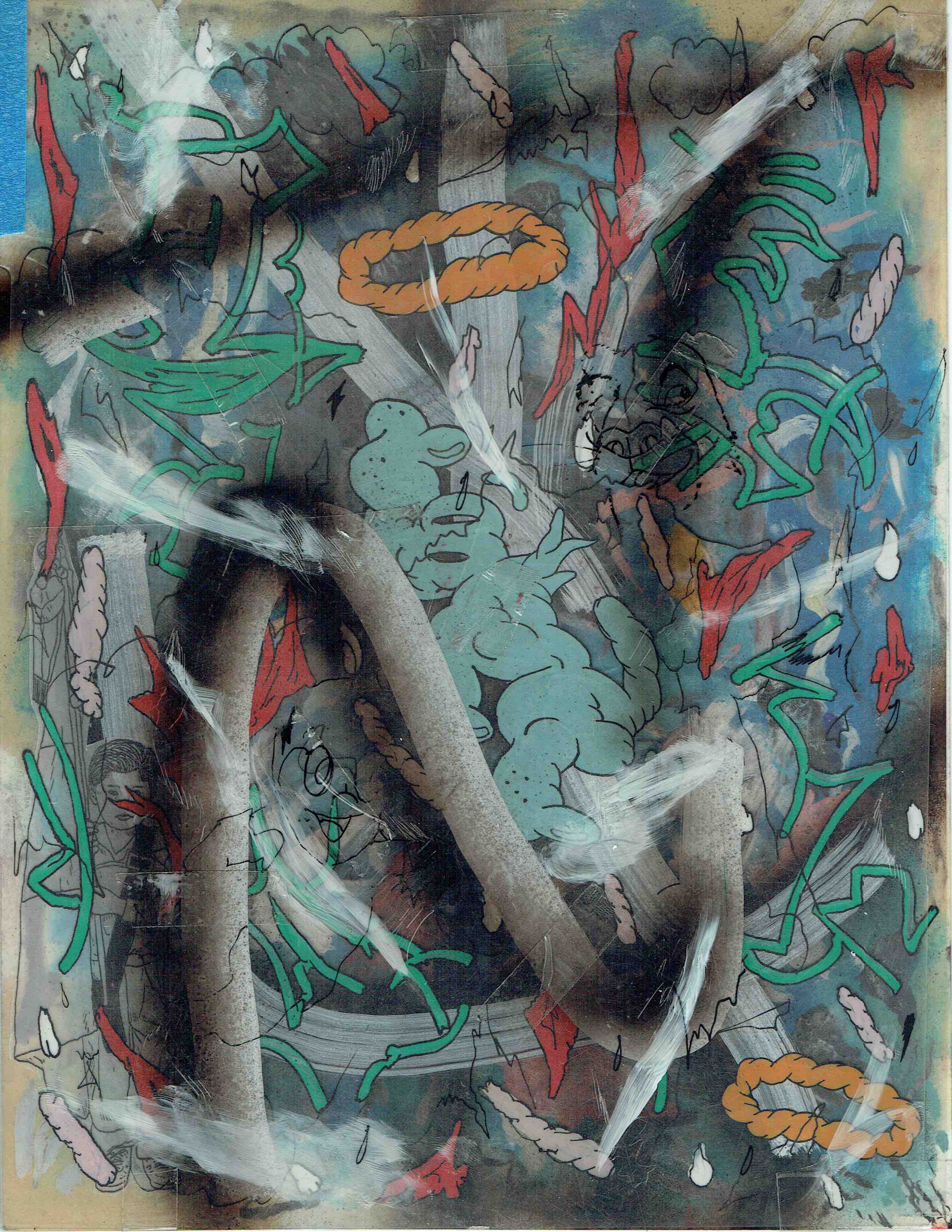
Essay
El vector escorpión | On the work of Luis Campos
by Christian Camacho
Reading time
3 min
What is a specter made of? Of signs, or more precisely of signatures, that is to say, those signs, ciphers, or monograms that are etched onto things by time.
— Giorgio Agamben
My interest in writing about the work of Luis Campos is the same interest that I’ve always had with artists whose work holds, in some way, a relationship with the ghost.
Luis Campos’s ghost, a darkness both luminous and complex, seems to have been born from a multitude of decays or mnemonic infection; its peculiar time slices, laser-like, the membrane that separates nostalgia from vertigo, positing a specific suspension of the shared field between certain drawing and painting practices of our days.
The currently deployed forms are arranged to be translated graphically, whether by the logic of the stencil scanning, the tattoo needle or the screen’s backlight, inviting us to consider a shared origin for the vector plane. A life of curves precipitates on surfaces to a lesser or greater extent vulnerable to slicing and invasion.
A nervous mechanism rapidly distributes elements in his drawings, flying in the face of our ability to keep up, leaving a snapshot of both zooming in and zooming out: a poster that is also a miniature. His atomized grid of the visual plane generates a whirlwind of moods where everything is fluid: the bittersweet coexistence of lights, cobwebs and smoke.
However, in some of his paintings, a dissimilar operation appears. Whereas the continuous undulations found in his drawing sharpen the edges by making them luminous, in his painting the opposite seems to be the case: a desaturation, with paleness and loss taking place through the production of white.
Somehow, the work recalls the coordinates that David Batchelor found for a vision of art whose pendulum would always be the passage between the luminous and the grey: the matter of thinking that the peaks of approximation towards grey are actually moments for the transformation of time. Sometimes, they will remind us of the end of the stories, and other times, of their most remote origins.
The world of figures created by Luis Campos is full of coincidences and populated by ghosts. It is easy to feel familiar with the repertoire of apparitions found in his work. I don't feel we need to name them as we recognize them instantly. These glimpses, like the blur of the infinite scroll, leave the mark of a brief intoxication, a tiny spot produced by a tiny stinger. It is a small price to pay for this uneasy work, tumultuous while full of wonder and curiosity; this curved and multilevel circuit that the artist has generated to cover his vertiginous imagination, full of sharp turns and strange corners, the path of the needle and that of its shadow.
Published on August 24 2019